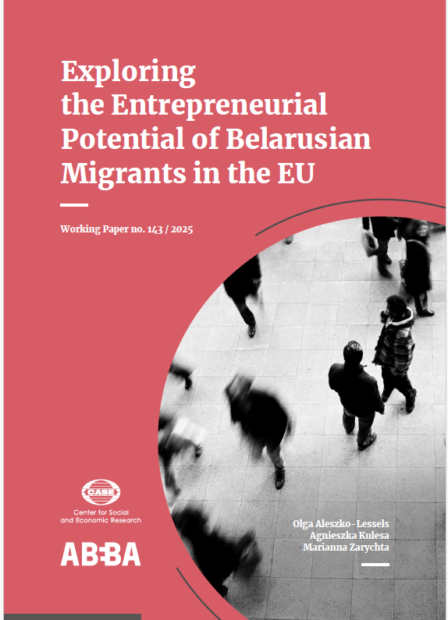
Exploring the Entrepreneurial Potential of Belarusian Migrants in the EU
This Working Paper aims to deepen the understanding of Belarusian migration to the EU, with a particular focus on entrepreneurship among Belarusian migrants.
acf domain was triggered too early. This is usually an indicator for some code in the plugin or theme running too early. Translations should be loaded at the init action or later. Please see Debugging in WordPress for more information. (This message was added in version 6.7.0.) in /home/case/domains/case.dev10.pro/public_html/web/wp/wp-includes/functions.php on line 6121Selected values

This Working Paper aims to deepen the understanding of Belarusian migration to the EU, with a particular focus on entrepreneurship among Belarusian migrants.
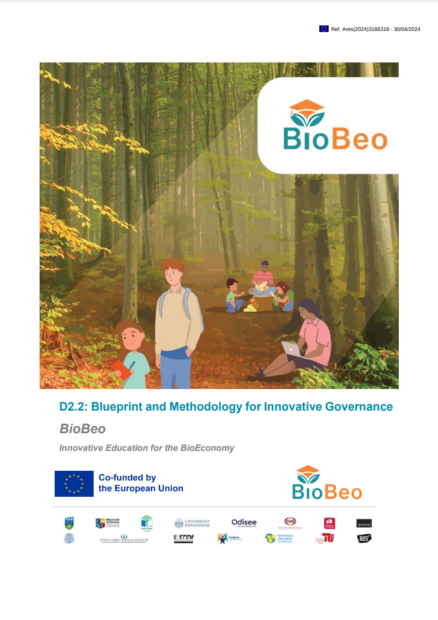
The publication is a key deliverable within the BioBeo project, funded under the Horizon Europe program. It provides a structured approach to integrating bioeconomy education into school curricula across different institutional and social environments. The report examines the actors involved in curriculum decision-making, from policymakers and school administrators to parents, students, and businesses. It categorizes existing procedures for introducing new content into schools, whether initiated by teachers, school heads, or government authorities. Key barriers—legal, organizational, and socio-cultural—are identified, along with strategies to overcome them. A central theme is the importance of inclusive governance in education, advocating for participatory decision-making that involves various stakeholders. Recommendations highlight the need for flexibility in curriculum design, adequate funding, professional support for teachers, and depoliticization of educational content. The report concludes by situating these findings within the broader BioBeo curriculum framework, reinforcing the role of education in fostering a sustainable and circular bioeconomy.
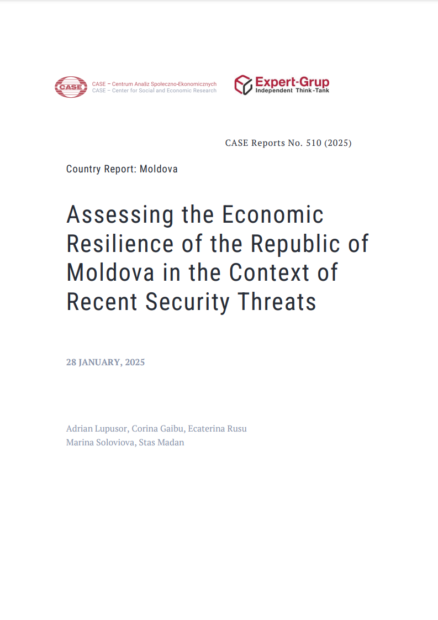
The report provides an in-depth evaluation of Moldova’s capacity to adapt to crises such as the COVID-19 pandemic, the energy crisis, and geopolitical tensions resulting from Russia’s war in Ukraine. It examines Moldova’s position as a small, open economy with significant exposure to external shocks, highlighting vulnerabilities in energy imports, trade imbalances, and political stability. Key topics include Moldova’s shift toward European integration, with milestones such as EU candidate status and expanded trade relations, which have helped reduce reliance on Russia. The report analyzes macroeconomic trends, financial sector stability, and energy dependency, identifying progress in institutional reforms and external support mechanisms that have bolstered the economy. However, ongoing challenges remain, such as inflation, fiscal deficits, and the unresolved Transnistria conflict, requiring targeted policy reforms and sustainable strategies for long-term resilience.
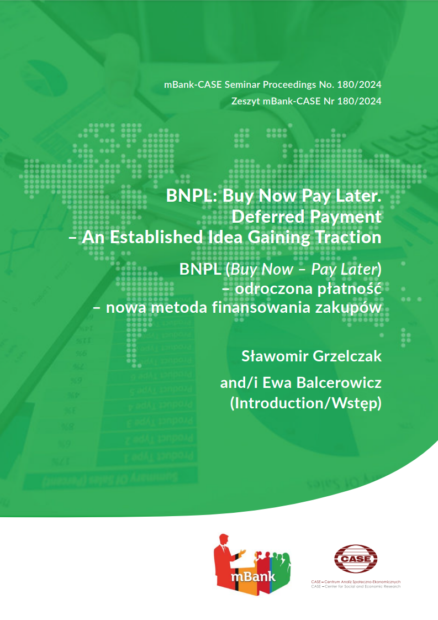
The publication examines the growing popularity and implications of the Buy Now, Pay Later (BNPL) financial model in Poland and globally. It features expert analyses and discussions from a seminar held on March 14, 2024, including insights from key players like PayPo, PKO BP, and the Credit Information Bureau (BIK). The publication focuses on: BNPL Evolution and Success: Originating in Sweden, BNPL has transformed global online shopping, offering deferred payment options as an alternative to credit cards. Poland’s BNPL market, still in its infancy, shows rapid growth due to firms like PayPo, Twisto, and Allegro Pay. Comparison with Credit Cards: Unlike credit cards, BNPL offers simpler, targeted transactions that resonate with younger demographics and more women. It avoids the complexities and high fees associated with traditional credit cards, fostering higher adoption rates. Polish Market Dynamics: By the end of 2023, nearly 2 million Poles had used BNPL, representing 12% of active borrowers. PayPo leads the market with innovative features, while PKO BP introduces seamless banking integration for deferred payments. Challenges and Growth Potential: Despite its success, establishing a universal BNPL business model remains challenging. However, its consumer-centric approach signals continued growth, especially as it aligns with modern purchasing behaviors. The report provides a nuanced understanding of how BNPL reshapes financial landscapes, blending fintech innovation with traditional banking.
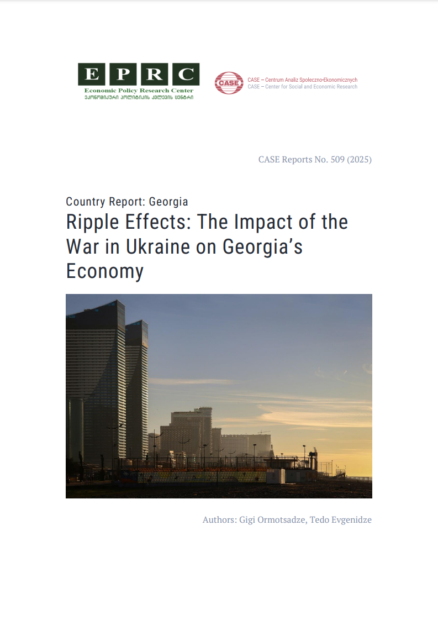
The publication is a comprehensive analysis by the Economic Policy Research Center (EPRC). It investigates the multifaceted effects of the Ukraine war on Georgia’s economic landscape, combining insights from historical developments, current vulnerabilities, and future prospects. Authored by Gigi Ormotsadze and Tedo Evgenidze, the report highlights the country’s integration into global systems, its dependency on external economic factors, and the challenges posed by political and economic shifts. The document explores key sectors such as trade, energy, and finance, and scrutinizes how inflows of migrants, financial assets, and geopolitical instability have created both opportunities and risks. It underscores the resilience Georgia has demonstrated in its recovery from crises like COVID-19 and the Russian invasion of Ukraine, while noting systemic weaknesses such as high debt levels, governance inefficiencies, and a reliance on external markets. The report closes with targeted policy recommendations aimed at mitigating vulnerabilities and fostering sustainable growth.
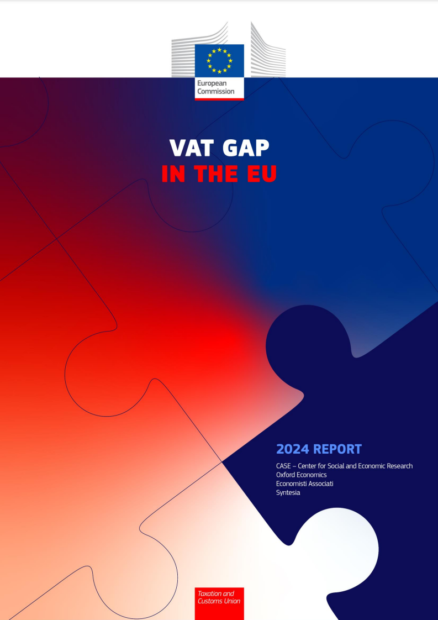
The report offers an extensive analysis of the value-added tax (VAT) compliance and policy gaps across the EU, reflecting trends between 2018 and 2022. It explores the discrepancy between the theoretical VAT Total Tax Liability (VTTL) and actual revenue collected, providing insights into compliance inefficiencies and policy-induced revenue losses.
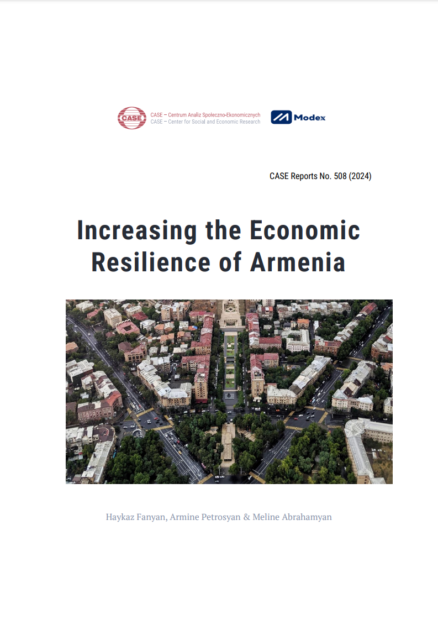
The publication provides an in-depth analysis of Armenia’s political, economic, and structural vulnerabilities, emphasizing the nation’s reliance on Russia. Authored by Haykaz Fanyan, Armine Petrosyan, and Meline Abrahamyan under the CASE Reports series, the study outlines Armenia’s economic challenges and explores strategic opportunities to bolster resilience against shocks. The report focuses on: Geopolitical Context: Armenia’s strategic pivot to the Eurasian Economic Union (EAEU) increased its economic ties with Russia, impacting trade and energy dependencies. Recent geopolitical tensions, including conflicts with Azerbaijan and the Russo-Ukrainian war, shaped Armenia’s political and economic landscape. Macroeconomic Trends: While Armenia achieved notable GDP growth, especially in 2022 due to increased exports to Russia, the report cautions against overreliance on volatile external factors. The authors identify rising public debt, fluctuating inflation, and an evolving fiscal landscape. Sectoral Analysis: Banking and Financial Sector: Post-COVID, Armenia’s banking sector saw growth, buoyed by Russian inflows. However, risks from external shocks remain. Energy Sector: The study details Armenia’s renewable energy potential while highlighting dependence on imported fossil fuels. Policy Recommendations: The report concludes with actionable strategies to diversify Armenia’s economic partnerships, reduce energy dependency, and enhance trade resilience. It underscores the importance of improving infrastructure and fostering regional cooperation. The report is a crucial resource for policymakers, academics, and investors, offering comprehensive data from 2007 to 2023 to inform Armenia’s path toward sustainable development.
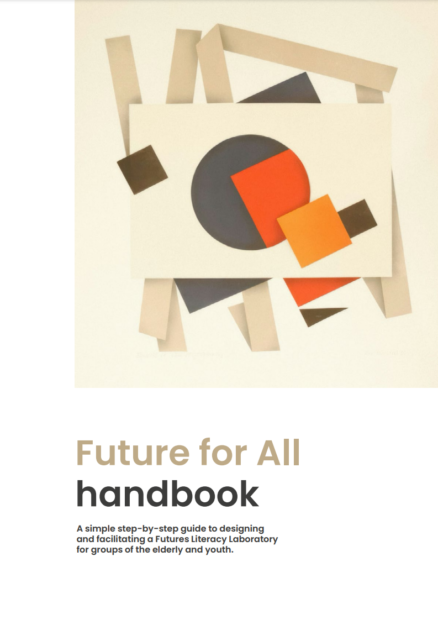
The “Future for All” Handbook is an insightful guide for designing and facilitating Futures Literacy Laboratories (FLLs), an innovative method to empower people to envision alternative futures and challenge their assumptions about the present. This publication, part of the “FUTURE FOR ALL” project, bridges generational gaps by engaging youth and seniors in interactive workshops aimed at fostering collaboration and fresh perspectives on societal challenges. Key highlights include: Introduction to Futures Literacy: Defined as the ability to imagine diverse futures to broaden thinking about the present, it is framed as a critical tool for navigating modern uncertainties and opportunities. Workshop Structure: The FLL approach unfolds in four phases: Reveal participants’ current assumptions about the future. Reframe these assumptions using imaginative scenarios. Reflect on new insights gained. Act by turning ideas into actionable plans. Practical Guidance: The handbook provides step-by-step instructions for workshop facilitators, from planning topics and logistics to utilizing exercises like the Polak Game and crafting custom reframing scenarios. Reframing Scenarios: Five imaginative narratives challenge participants’ thinking, such as: “Super Organisers”: Communities self-managing resources post-state service collapse. “Park City”: Transforming urban landscapes into collective green spaces. “New Art of Communication”: A cultural shift towards diverse interpersonal styles. Cross-Generational Focus: Tailored approaches are designed to resonate with youth, seniors, or mixed groups, such as envisioning “My Life in 2050” or “An Aging-Friendly Warsaw.” Outcomes and Impact: Participants emerge equipped to challenge assumptions, creatively engage with the future, and identify actionable steps to shape society. Supported by UNESCO and EU innovation frameworks, this handbook is a versatile resource for educators, policymakers, and community leaders aiming to harness the power of foresight for social progress. Its methodologies not only spark dialogue but also cultivate agency and resilience in addressing future uncertainties.
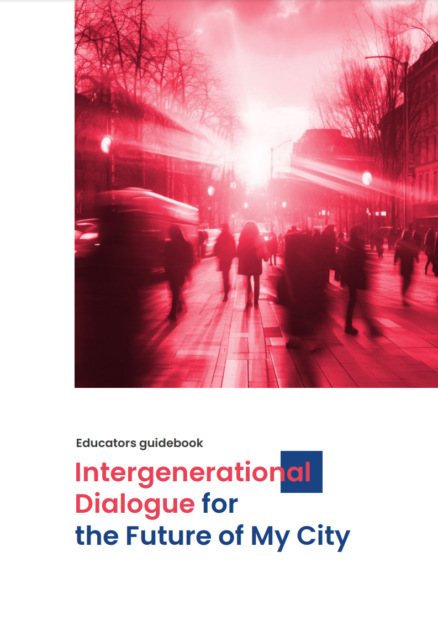
The publication is an educator’s guidebook designed to inspire and support discussions between youth and elderly participants about shaping the future of urban environments. Created as part of the “Future for All” project by CASE (Center for Social and Economic Research), this guidebook uses Warsaw as a case study but provides adaptable insights for cities globally. It is funded by the European Economic Area and Norwegian Financial Mechanism (2014–2021). The guidebook delves into critical themes, including: Demography: Addressing the implications of an ageing population, declining birth rates, and migration patterns for urban planning and social cohesion. Migration: Exploring the integration of diverse populations and fostering intercultural and intergenerational understanding. Climate Change: Highlighting urban sustainability through public initiatives like green spaces and waste reduction. Digitalisation: Emphasizing smart city development while bridging the generational digital divide. Central to its approach are intergenerational activities that foster collaboration and mutual understanding, with a focus on scenario planning, problem-solving, and community engagement. This resource equips educators with tools to promote critical thinking and inclusivity, encouraging young and older citizens alike to actively shape resilient and sustainable urban communities.
Try using different keywords or clear filters.
You're now part of a community that values [your newsletter's focus]. Get ready to stay informed, inspired, and engaged with our carefully curated content.
